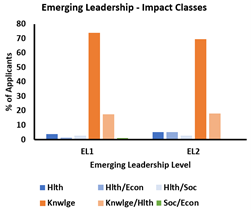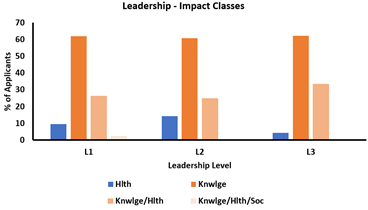Demonstrating your impact for the NHMRC Investigator Grant scheme
- thegrantedgroup

- Sep 2, 2021
- 2 min read
Updated: Oct 15, 2021

Welcome back to Part 2 of this 3-part series on the NHMRC Investigator Grant scheme. In Part 1, we looked at author metrics to benchmark successful Emerging Leadership and Leadership Fellows. Today, we will focus on Research Impact.
Once you define your ‘single research program’, the NHMRC assesses the impact of that program in three ways: the ‘significance and reach’ of the program’s impact, the ‘contribution of the research program’ to that impact and the ‘contribution of the applicant’ to the research program. You must also self-nominate one or more overarching ‘class of impact’ to be assessed against: Knowledge, Health, Economic or Social impact. Since your impact is measured against expectations of that class, identifying the single best research program and the corresponding impact class is thus essential to ensure your best chances of success. Remember that ‘impact’ contributes 20% to the final score of an Investigator Grant.
Despite ‘health and medical research’ being the focus of all NHMRC funding, we find that the impact class ‘Health’ may not always be the best choice. This is because most research findings are of new ‘knowledge’ that can more directly lead to a demonstrable impact on the growing body of evidence for medical research. Only a limited number of programs can convincingly claim a verifiable impact on health itself has already occurred – in the sense that the NHMRC defines it – for example improvements in therapeutics, diagnostics, treatment, or adopted clinical guidelines, international standards, policies or programs. Selecting only ‘Health’ means you will be compared to programs that have a wealth of verifiable change in those areas. Hence, it is easy to see how choosing the wrong impact class can work against an application.
To shed some further light on this, we reviewed publicly available research profiles of NHMRC Investigator Grant Fellows in the 2020 round and classified them according to the research impact class as defined by the NHMRC. Presented below are the impact classes of career-long research descriptions for various Emerging Leadership and Leadership levels of the fellowship. For all levels of application, ‘Knowledge’ class is overwhelmingly the majority with ‘Health’ represented more at Leadership levels. This may be unsurprising, given that the longer careers of Leadership fellows enable them more time and opportunity to translate their research findings into verifiable ‘Health’ impacts.

For most applicants, we find that it can take several conversations to tease out the fundamentals of your research program and your ‘corroborating evidence’. If you are looking at applying for this scheme, we highly recommend you start reflecting on your research contributions and identify a single research program and the impact class(es) most likely to place your work in the best light. In place of an external consultant, a trusted peer or mentor can help to identify the highlights of your research career for this section.
In the finale of this 3-part series, we will review the credentials of Emerging Leadership and Leadership fellows to address an often-asked question: Do I have better chances if I am a practicing clinician?






Comments